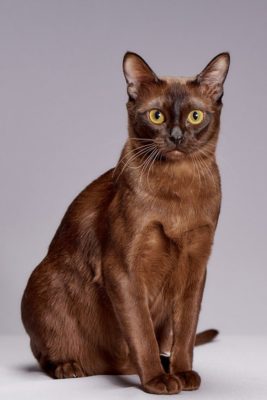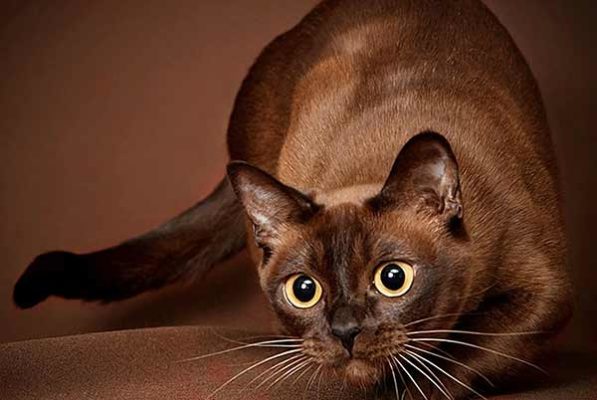Burmese Cat
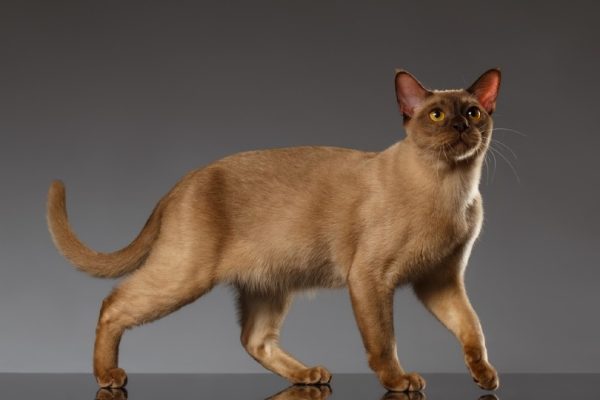
The cat does not have a calm and reserved temperament. It is a very active and affectionate pet. Burmese is devoted to its owner and does not leave him even one step. Cats of this breed usually love all members of the family without exception. Cats, on the other hand, are pickier and will look for a favorite among them.
Table of Contents
Breed Information
| Origin | Thailand |
| Size | 25-30 cm |
| Weight | Males 4-6 kg Females 3-5 kg |
| Fur Type | Short-haired |
| Color | Black, blue, purple, shades of chocolate |
| Lifestyle | Outdoors, indoors |
| Lifespan | 14-20 years |
| FIFe Classification | Category III “Short-haired and Somali” Breed designation – BUR |
| WCF Classification | Group 3: “Short-haired” Breed designation – BUR |
| TICA Classification | BU |
| Group | Short-haired cats, cats for kids, hypoallergenic cats |
| Price | $250-1500 |
Breed Photos
Origin History
Burmese is considered an ancient breed. The first mentions of it appeared in the XII century. Cats were highly valued; members of the aristocracy only bought them. At the end of the XIX century, Burmese came to Britain and later spread throughout the world. Initially, the cats were called black Siamese.
The ancestor of the breed was not a pure cat but a mestizo of Burmese and Siamese. They were bred by Joseph Thompson, a retired US Navy doctor. In 1934, the first standard for Burmese was published. A few years later, the CFA registered its breed standard. To increase the number of individuals, frequent crossbreeding between Burmese and Siamese was practiced. It led to the appearance of a large number of crossbreds. Because of this, the CFA stopped registering them. American breeders began to restore the purebred. The results were positive, and the CFA renewed the registration in 1957. Two years later, a common breed standard was created, which has not changed to this day.
Appearance
Burmese is a medium-sized cat with trim and a compact body. Its chest is round, and its back is straight. The pet’s neck is long and thin but still strong. On it sits a wedge-shaped head. The transition from the forehead to the nose is pronounced. The cat’s ears have triangular tips and tilt forward. The eyes are large, widely spaced. They are a combination of different shades of yellow.
The pet’s tail is medium length, not wide. The limbs are relatively thin, not long. Paws oval in shape with a different number of toes on the front and hind legs. Wool is short and thin, without an undercoat. Burmese’s upper body is always darker, regardless of color. The latter standard is sable, blue, chocolate, platinum (purple).
Character
The cat does not have a calm and reserved temperament. It is a very active and affectionate pet. Burmese is devoted to its owner and does not leave him even one step. Cats of this breed usually love all members of the family without exception.
Cats, on the other hand, are pickier and will look for a favorite among them. But both the former and the latter do not tolerate loneliness and like to be in the spotlight. At the same time, they will understand the mood of their owner and will not be intrusive. Burmese cat treats children well and will gladly share a game with them. With dogs and other animals, get along well.
Care
Burmese cats are unpretentious in care. A short hair is enough to comb it once a week. Wipe the cat daily with a damp cloth or chamois. Bathe when necessary. Use special shampoos. Get a litter box and scratching post for your cat. If it does not want to use the latter, you will have to regularly trim its claws with secateurs. Also, clean Burmese’s ears from dirt.
Education
The Burmese cat is brilliant and obedient. Therefore, it is easy enough to educate and train. The cat quickly becomes accustomed to the litter box and scratching post. You can teach her the basic dog commands. Be patient and forgiving when doing so. Don’t shout at him or raise your hand in any way. Always encourage and motivate your pet with praise. The clever cat will eventually pay you back by obeying commands correctly.
Common Diseases
The immunity of the Burmese cat is quite strong. It does not suffer from genetic diseases. However, the pet is still characterized by some diseases:
- difficult breathing;
- severe lacrimation;
- skull deformity;
- gum inflammation;
- tail defects.
Take your cat to the vet regularly to avoid problems. Vaccinations and deworming should be done at the right time. These treatments should be done at least once every six months.
Nutrition
The food of a Burmese cat requires special attention. Representatives of this breed are picky about food. Therefore, it is not recommended to feed the cat the same food. The best food is dry premium food. They contain vitamins and minerals and help prevent tartar.
Kittens do not need to be restricted in food, but it is undesirable to overfeed an adult cat. It is worth remembering that human food is not suitable for Burmese. Exclude from its diet spicy, fried, pickled food, potatoes, mushrooms, tubular bones, and legumes. Avoid tomatoes, garlic, onions, and grapes.
 American Wirehair
American Wirehair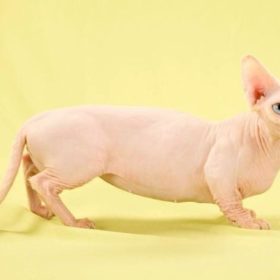 Minskin
Minskin Ural Rex Shorthair
Ural Rex Shorthair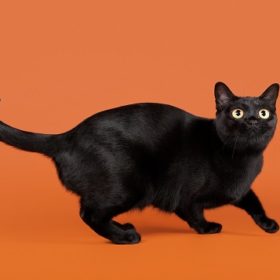 Bombay Cat
Bombay Cat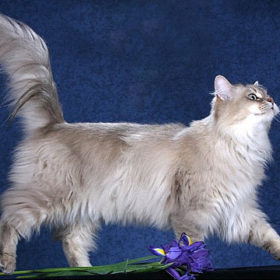 Chantilly-Tiffany
Chantilly-Tiffany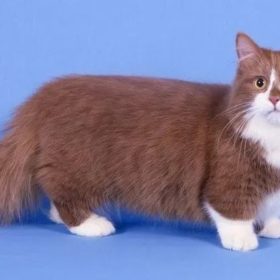 Munchkin Longhair
Munchkin Longhair
